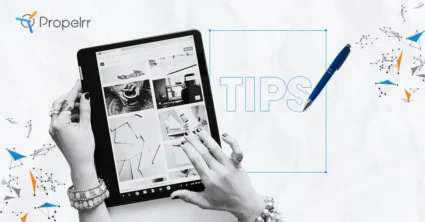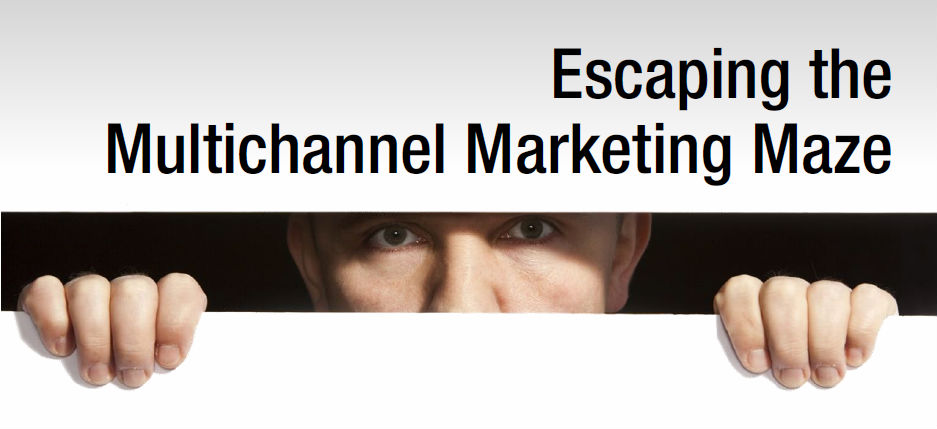4 Solid Revenue-Driven Digital Marketing Tips for Local SMEs
Author & Editor
Founder & CEO
Published on: May 25, 2022 Updated on: Mar 19, 2025

Table of Contents
To compete in the big leagues, you'll need more than just run of the mill marketing strategies.
Let truth be told.
All successful businesses that started even before the digital and mobile boom have already developed proven marketing methods to capture their market. Look at your local department stores, local favorite restaurants, and the plethora of local stores where we have been their customers in one way or another over the years. They have been there for sometime. In short, they have been profitable that way.
Those EDSA and Time Square billboards, pamphlets, brochures, word-of-mouths, ATL (above-the-line), and BTL (below-the-line) advertising campaigns have been their tools of the trade for DECADES (yes, all caps!). Old school or traditional marketing helped them with their bottomline. That’s a fact.
Now, here comes the new kid on the block, digital marketing. Search visibility, social media marketing, mobile marketing, UX (user experience), CRO (conversion rate optimization), infrastructure, brand building, and data analytics, all rolled into one have become a challenge for many business owners. You could hear more oppositions about digital marketing from brands and business owners that are primarily reliant to their physical stores. We often hear them saying,
- “We are primarily a physical store. We need foot traffic than those likes, shares, re-tweets, and etc.”
- “I know my overall strategy but I know so little about digital’s nitty gritty.”
- “So, I have a report but I don’t exactly know how this impacts my overall strategic goal or business objective.”
But why? Because there’s a lot of grey areas on how to properly capitalize online presence by connecting it to the offline marketing initiatives.
There’s a huge disconnect between offline and online marketing activities that somehow blur the link between the two. Most of the time, they become two separate endeavors competing for marketing budget instead of working in synergy to positively impact bottomline. It becomes more expensive and frustrating for most business owners as well.
So, what should you do? This brings us to the idea of closing the gap between offline and online marketing, which is coined as “non-linear marketing”. Implementation of non-linear marketing can take many forms but it requires a lot of data-driven and tech-savvy mindset.
Here are a few things you might want to consider that we have been doing for our clients for sometime.
1. Develop A Closed-Loop Uber Funnel
If you are dependent on your physical stores’ foot traffic and sales, you must learn to ask your digital marketing providers on how those likes, shares, and number of fans, content, or search engine ranking can impact your sales. It may sound simple but most of the time, whenever I ask this proverbial question, I get blank stares or inadequate answers from business owners and marketing account executives, most of the time.
So, how can we have a closed-loop uber funnel then?
Here’s a simple diagram I created for a non-linear marketing campaign implementation of our client who wanted to use social media as their digital marketing channel.

The above illustration is a bird’s eye view of what you can do for your digital marketing campaigns that can impact sales and revenue.
You would notice, while social media as a channel is good, I still use a microsite to engage the online visitors in order to capture more data such as their demographics, interests, etc. You may argue that the Facebook page provides all that data already. My answer is No. If you have a microsite that is tapped into Facebook API as an app, you can easily mine data of your fans or visitors and turn them into leads. Facebook is a borrowed medium. You don’t own it. Other people are mining your data. Your microsite is your own, it is your data, you control it.
Lead your audience into a more focused path and less crowded medium. This is something that you could not do with just having a Facebook page. The key here is using your creativity in driving your online visitors to your offline stores and eventually, convert them into buying customers. Do you still remember that simple truth I’ve mentioned in the beginning of this article? Yes! It is about REVENUE.
Take note, too, that the illustration above is just a high-level concept but if you are really interested to implement a non-linear marketing approach, let’s talk!
2. Think Mobile-First and Inherent Consumer Journey Screens
Ten years ago, every John Doe or Juan dela Cruz would want to have a website because it is cool and everyone is having it. You know what? That is still true until now for most part of the world. Philippines is not spared. Beyond that point though, a website or social business presence is easier to create now, leading to the bandwagon effect of every brand having the urge of having a Facebook page, a X account, or a Tumblr blog. There’s nothing wrong with that as long as you understand the fundamental objective of creating one – that is, to drive more business to your brand.
Now, I have to make an exemption here. Those brands who really get the rationale behind web presence are investing well while others succumbed to the idea of cheap websites. For the latter, the end result is dismal. It is not an isolated case to see that a multi-million company could not even invest on a fairly user-friendly website to support its growing consumer base online. Don’t be misled here, though. Having a decent website doesn’t always need to be expensive. You just have to understand the higher value your website gets should it be well-thought of, scalable, and intuitive. Not to mention, mobile-first design, interaction experience, CTAs (Call-to-Action), etcetera-ready website. Developing a website is just a subset of the whole gamut of coming up with a kick-ass online brand presence, I tell you. Think value and not price. You pay peanuts, expect monkeys to come, remember?
A solid infrastructure is required in order to implement a non-linear marketing strategy seamlessly. 99.9% uptime scaled server, good webpage speed, robust application framework, superb UX, and more can effectively drive your online visitors to your local stores.
Okay, stay with me a bit more. Three or four years ago, mobile presence was simply an add-on screen among brands. It was never meant as the “first-screen” customer experience for online presence. These days, the concept of mobile-first design is taking its traction. From the January 2015 report of the Altimeter Group, The Inevitability of a Mobile-Only Customer Experience, consumers are increasingly becoming mobile. A unified digital CX (customer experience) is called for.

It should be noted that having a responsive design or an adaptive design does not necessarily address mobile users. Behaviors, interactions, priorities, and needs from multiple screens are very different. Consumer journey must primarily be understood.
Hint: Create a multi-device online presence and engage your visitors, leading them to visit your physical store or experience your brand beyond those likes and shares. Align each screen specific to customer journey per device.
3. Implement Clean Data Tracking
I could not stress enough the value of having a clean data for analysis due to great data tracking implementation. If you did NOT set your data tracker properly from the start of your campaigns, every data you get is garbage. GIGO, remember? Garbage-in, garbage-out. Drum roll…Chaos! What does it lead you in having a clean data? Well, it is basis of your KPIs, and metrics that you measure against your strategic goals and business objectives.
There are many tweaks you need to do in order to make sure your data is pristine for analysis which can merit a long article/guide I tell you. Now, in the case of connecting your online data to your offline foot traffic, all the more complications it brings should your data tracking isn’t right.

Let me give you a scenario here. If you have been managing your Facebook page or X account by posting stuff from your website and you are using Google Analytics as your tracker, you might end up having a lot of DIRECT traffic instead of Facebook/X referral traffic. Why? Because a lot of visitors are actually using Facebook/X mobile applications instead of using their browsers. Google Analytics records mobile application traffic as direct traffic. Such case like this one I’ve cited jeopardizes your data insights. To solve this issue, you need to use Google Analytics tagging parameters or URL builder.
So, start looking at your data analytics with an eagle’s eye. Think about your ability to connect, converse, and convert through your data.
4. Use Multi-Channel Attribution
Let me ask you, what is happening to your website right now? What are your visitors doing to your pages? Do you even have visitors? What level of engagement are you doing with your visitors? How would you know that your local store buyers are actually your online visitors and vice-versa? Are your digital marketing efforts driving revenue? Which channel is your consumers’ first interaction with your brand? How about the last channel leading them to your store?
Two or three years ago, non-linear marketing attribution seems like a far-fetched idea that many savvy marketers dreamed of. Fast forward, it is already implementable using analytics, measurement protocol, etc. However, having a strong grasp of these technologies is crucial to seamlessly tie your online marketing efforts to your offline stores’ revenue.

Diligence is needed to evaluate what your digital marketing company is doing with your hard-fought marketing budget. For example, you should be able to answer based on data that a certain online cohort interacted with your brand on a certain date, went to your store over an average period of time to buy, or at least visit. Your report should contain that you spent X amount on Facebook Ads and drove Y online users to your physical stores and bought worth of Z amount of your products. Then, you can easily evaluate just by simple calculation if your Facebook Ads are worth it or not.
More than that, you should be able to tell which specific channel or at least, an ad that contributed and drove sales to your store, directly and indirectly. Again, revenue-focused, right?
Pro Tip
If you are being provided with marketing reports that only contain those vanity metrics such as likes, comments, number of fans, search engine rankings, etc. I am more than sure that your digital marketing may not really be working. More so, if your revenue relies on your physical stores, the need to start non-linear marketing approach is badly needed.
I believe that any business answers a demand or a need but it has to generate revenue else, it will stop to exist. If your digital marketing is superficially focused on those KPIs that do not really matter, then, it is time for you to re-evaluate your digital marketing efforts. It is time for you to look at those metrics that matter most —conversions.
A revenue-driven digital marketing strategy is what you need for your local stores.
